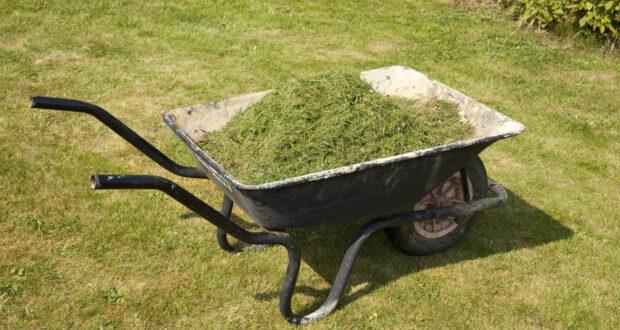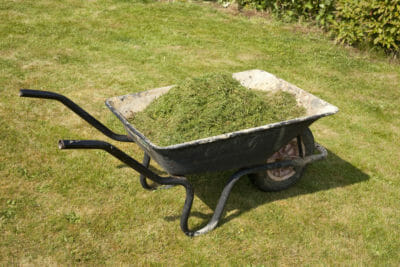People that have lawns both small and big can understand how much of a chore cutting the grass can be. But even worse – what do you do in all the grass clippings once you’ve finished mowing? The Environmental Protection Agency (EPA) estimates that yard waste is the reason for 18% of the refuse that individuals dump into landfills – rising to 50% during the growing season!
Approximately 75% of this waste comprises grass clippings with the remainder being tree leaves and limbs. Given that landfills are starting to be in want of space and many have banned grass clippings anyway. So isn’t it about time that we put our grass clippings to a positive use? Allow me to share some grass clipping uses that you probably never would have imagined:
1. Mulching
Mulch is the term used to describe any form of material that someone spreads on the soil as a covering. Organic mulches serve to retain moisture, suppress weeds, render the ground cool and enhance its fertility. Grass clippings, make an excellent organic mulch which has high amounts of nitrogen, something all plants would need to grow and flourish. Install a quarter-inch thick layer of fresh, grass clippings around flowers and flower beds. This acts as a obtain free, organic mulch. If it’s thicker than that, the grass won’t be able to digest fast enough and may even proceed to smell as it decomposes. Dried clippings – which serve as a perfect mulch for vegetable crops – can very well be spread on thicker than a fourth of an inch.
2. Raised Beds
Raised bed gardening is among the most proven methods to try in your garden! In case you maintain a container garden or raised beds, you’ll be excited to hear that they are actually an easy way to dispose of your excess grass clippings. To enhance soil quality and boost your yield, consider utilizing the Lasagna Method of soil mixing. It involves creating several layers of fabric to fill the bed and nourish your plants. In the lower regions of the beds, layer one part grass clippings with two parts shredded leaves. This mixture will slowly compost with time into fertile soil. The clippings really should be layered thinly to avoid matting. Once the beds are almost full (within six to 12 inches from the original top), put in a compostable barrier. Use things like cardboard and fill the rest with each of your chosen soil mixes.
Re-mineralize Your Soil And Increase Yields While Growing Truly Healthy, Chemical-Free Crops
3. Animal Food
Grass clippings can be utilized to make fodder for cattle feed. Some tests have concluded that silage constructed from recent clippings contains a protein content of 18.2%, along with a digestible matter content of 68% – significantly superior in comparison to hay, which generally averages a digestible matter content of about 59%. Alongside feeding cattle, grass clippings might be a viable supplementary source of food for sheep. The end product from several studies indicates that you can use grass clippings as an inexpensive, renewable feed source for all of your animals. Even if you don’t have animals, check if your neighbors have an interest in using your grass clippings. Remember: never use clippings from grass which has been chemically treated to feed live animals.
4. Lawn Clipping Tea
Making a compost tea out of your compost pile and your compostable items is an excellent strategy to suppress disease, amplify the variety of nutrients now available to plants, speed up the breakdown of toxins, and enhance the nutritional content and taste of vegetables. To brew a lawn clipping tea, place your freshly cut grass in a bucket of water and enable it to steep. Beneficial nutrients like potassium, nitrogen, phosphorous, chlorophyll and amino acids will leach from the grass directly into the water. After about two weeks, strain the liquid and use this tea to feed your plants by pouring on their roots or spraying toward their leaves.
5. Composting
Supposing you don’t want to leave them laying on the lawn, one of the most natural tactics is to put grass clippings to good use within your garden by composting them. Once you prepare the clippings in the right manner, you can then recycle the nutrients from grass into other sections of your garden. A suitable compost pile needs a mixture of green and brown materials. Freshly cut grass, which many people have touted as ‘green,’ consequently would need to be balanced out through the addition of brown material, like dry leaves, branches, twigs or paper. When adding fresh grass clippings, remember to turn the grass straight into the pile to increase aeration and prohibit compaction. Alternatively, it’s possible to leave your grass clippings to change color and dry out on their own. In this way, they can eventually serve as brown material in a natural manner!
6. Recycling
If you’re producing more grass clippings than you can use, the best possible option is usually to bring unwanted clippings to your local recycling center. This facility can dispose of them in an environmentally clean and efficient manner.
7. One More Just For Fun: Natural Easter Egg Dye
Grass clippings can produce a fantastic, natural green dye color for Easter eggs. You will also find out that it is considered an organic fabric dye! So save some for next Easter.
Avoid Burning Your Grass Clippings
In addition to the fact that the law prohibits burning of grass clippings or leaves in plenty of states and countries. Unfortunately, burning wet grass clippings and green materials creates a thick smoke.
This smoke can easily be harmful to health and, of course, the environment. Thus, researchers with the Agricultural Research Service in Albany, California have discovered an alternative method to turn ordinary grass clippings into environmental fireplace logs that might be on sale in the future, so keep your eyes peeled!

